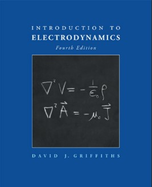Solution Found!
An electric dipole rotates at constant angular velocity ?
Chapter 11, Problem 21P(choose chapter or problem)
Problem 21P
An electric dipole rotates at constant angular velocity ω in the x y plane. (The charges, ±q, are at the magnitude of the dipole moment is p = 2qR.)
(a) Find the interaction term in the self-torque (analogous to Eq. 11.99). Assume the motion is nonrelativistic (ωR ≪ c).
(b) Use the method of Prob. 11.20(a) to obtain the total radiation reaction torque on this system.
(c) Check that this result is consistent with the power radiated (Eq. 11.60).
Reference equation 11.60
Reference equation 11.99
Reference prob 11.20
Deduce Eq. 11.100 from Eq. 11.99. Here are three methods:
(a) Use the Abraham-Lorentz formula to determine the radiation reaction on each end of the dumbbell; add this to the interaction term (Eq. 11.99).
Questions & Answers
QUESTION:
Problem 21P
An electric dipole rotates at constant angular velocity ω in the x y plane. (The charges, ±q, are at the magnitude of the dipole moment is p = 2qR.)
(a) Find the interaction term in the self-torque (analogous to Eq. 11.99). Assume the motion is nonrelativistic (ωR ≪ c).
(b) Use the method of Prob. 11.20(a) to obtain the total radiation reaction torque on this system.
(c) Check that this result is consistent with the power radiated (Eq. 11.60).
Reference equation 11.60
Reference equation 11.99
Reference prob 11.20
Deduce Eq. 11.100 from Eq. 11.99. Here are three methods:
(a) Use the Abraham-Lorentz formula to determine the radiation reaction on each end of the dumbbell; add this to the interaction term (Eq. 11.99).
ANSWER:
Step 1 of 4
Part a
We are required to calculate the interaction term in the expression for torque assuming the motion to be nonrelativistic.
We are first required to calculate the electric field at the charge for the charge
.
Let us check the following figure to understand the situation.
We get ,
At the point , the velocity of the charge
is,
So, the acceleration,
We have the electric field equation,
Now,
